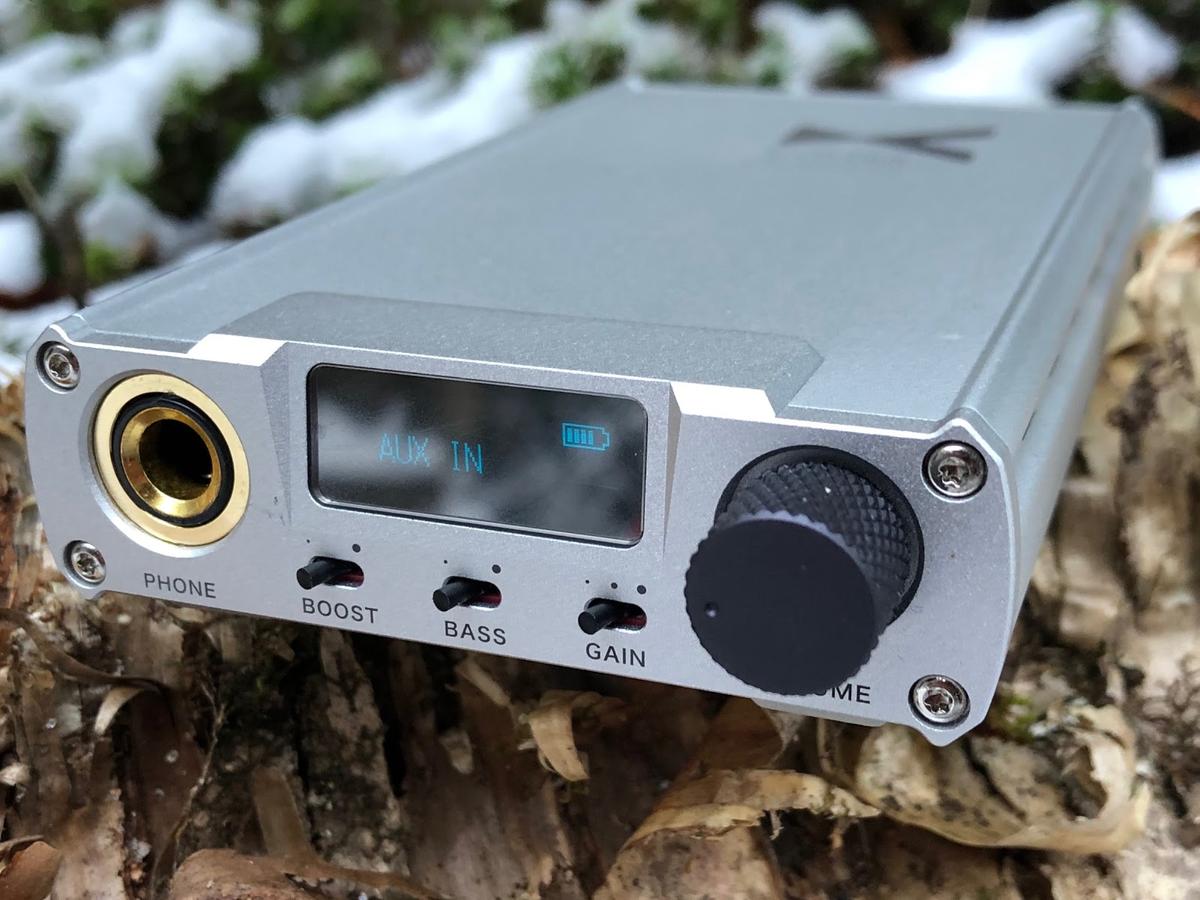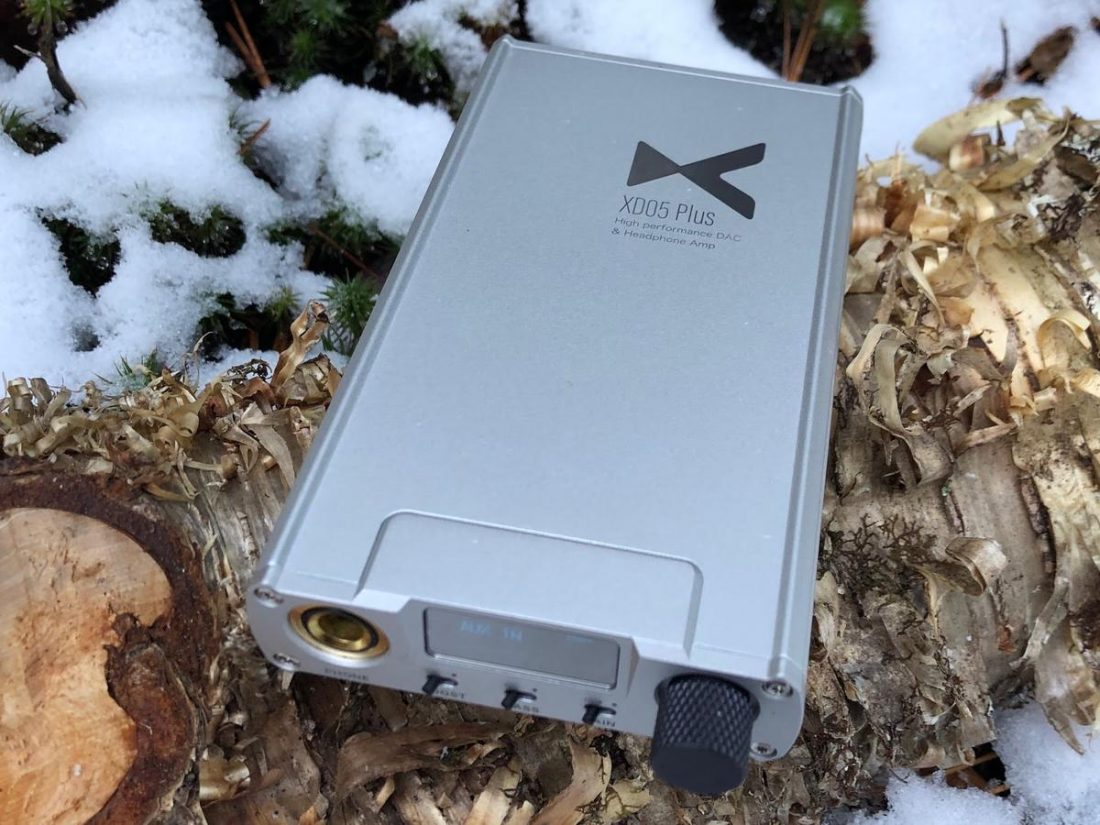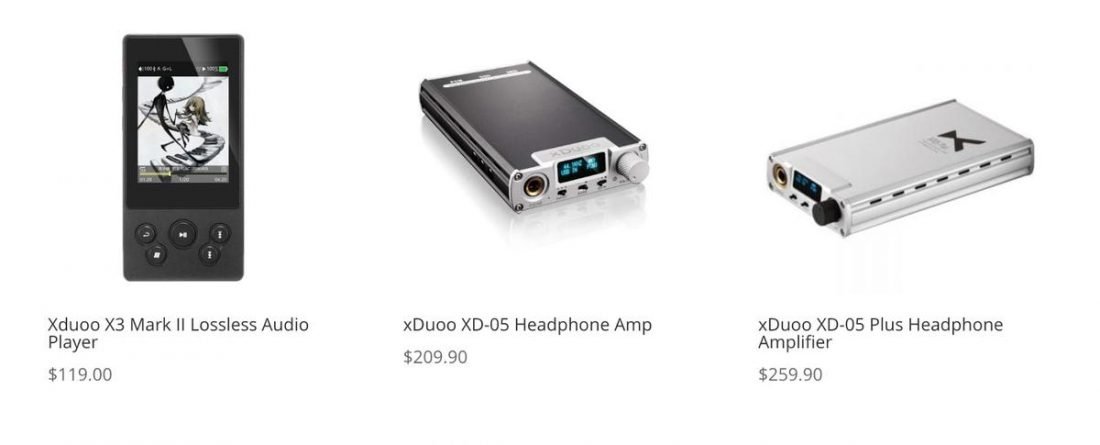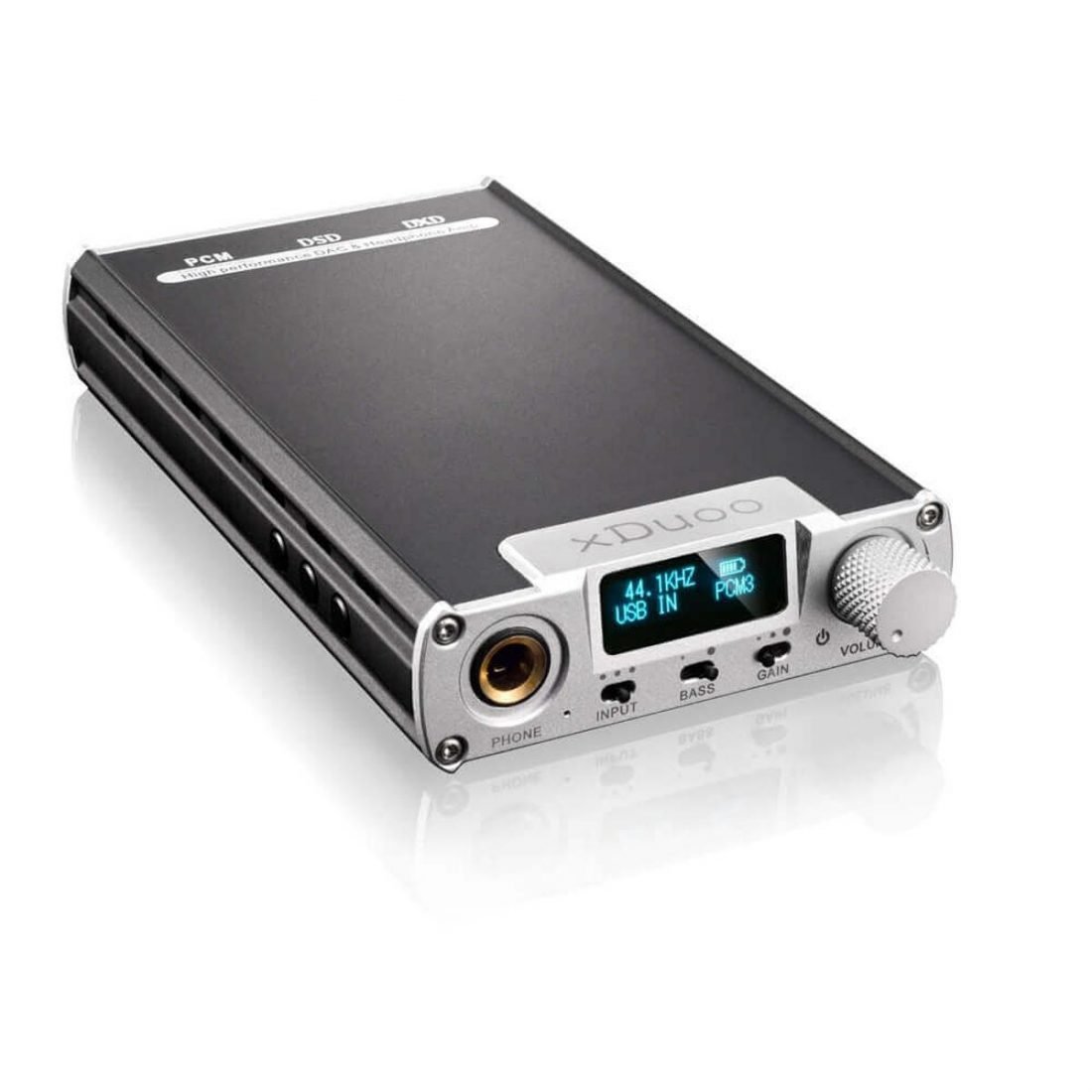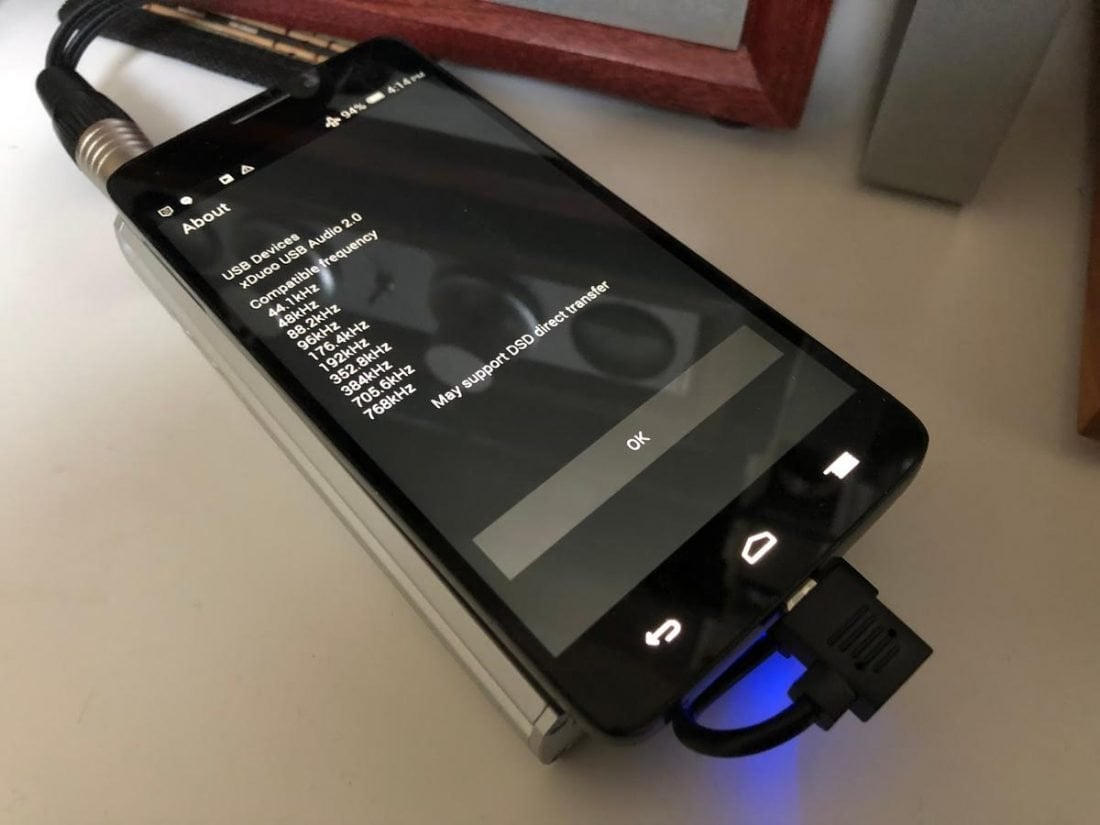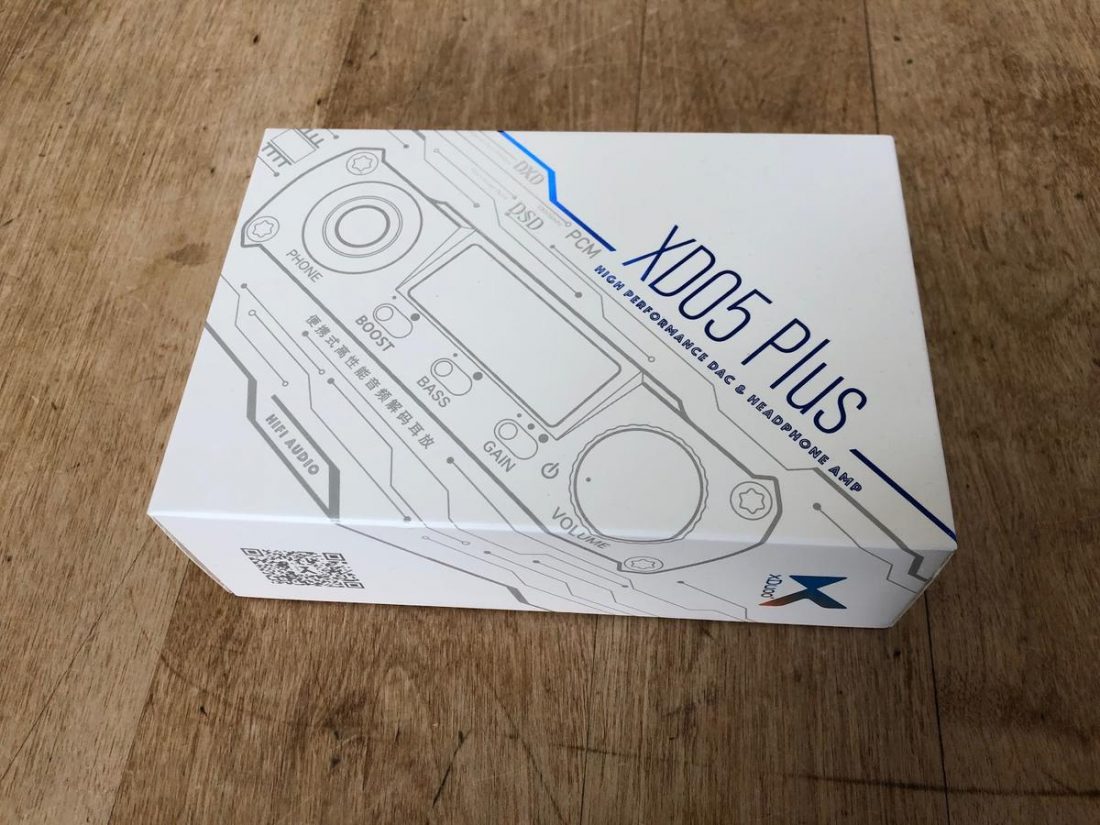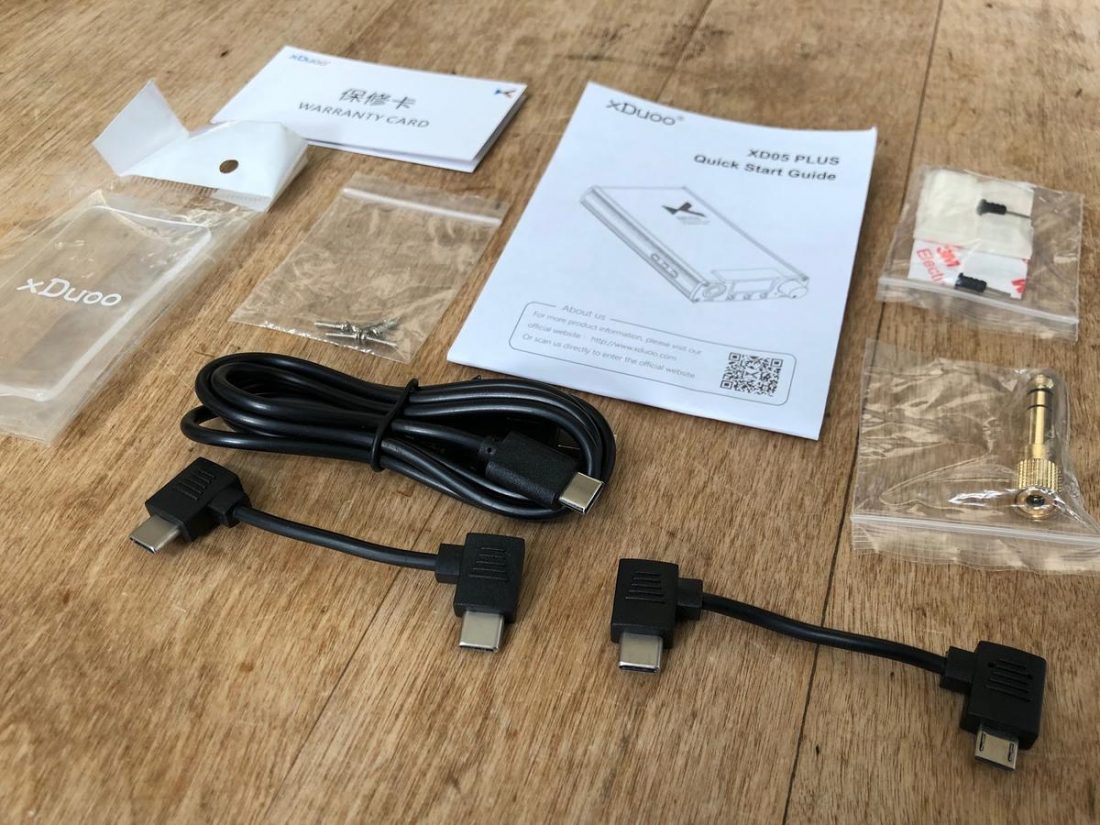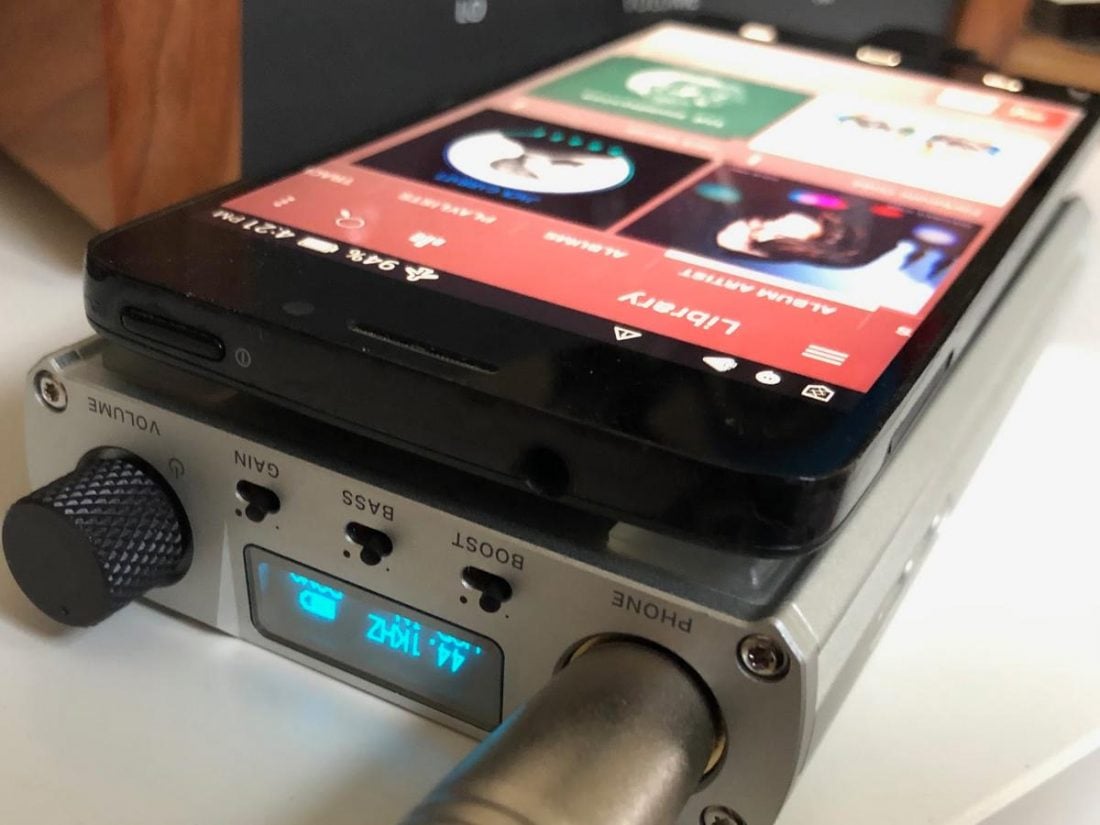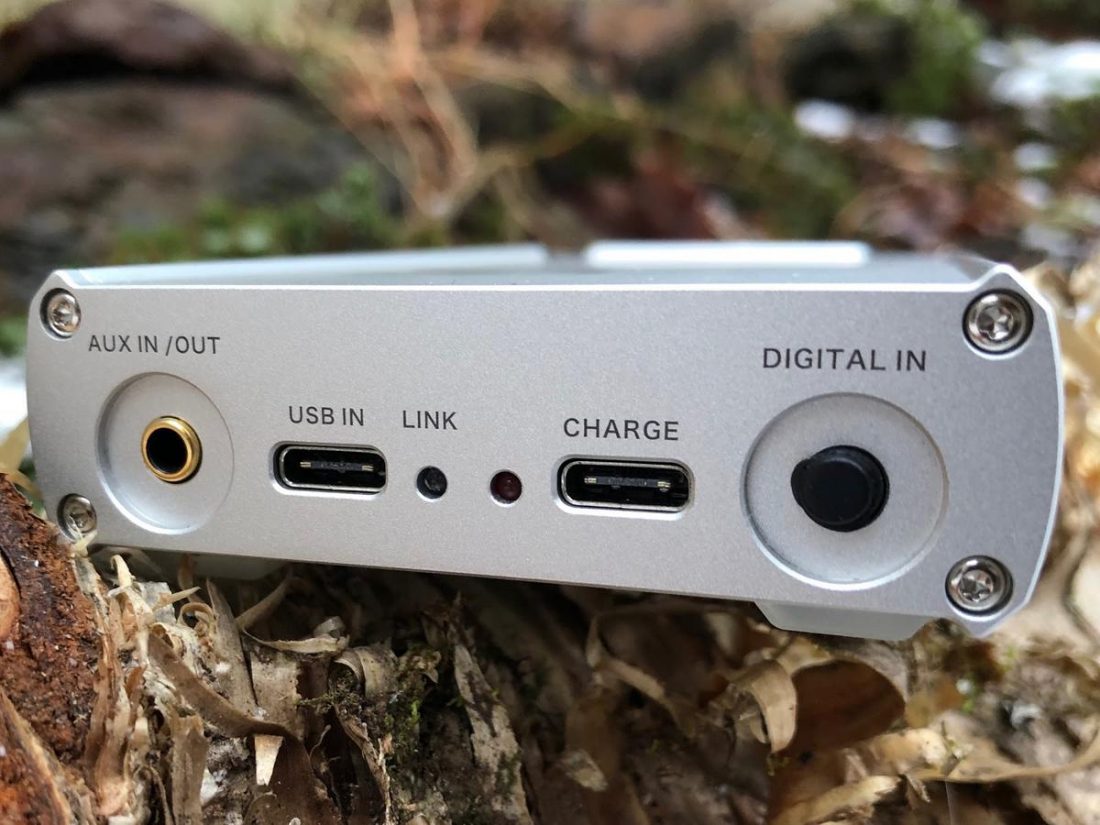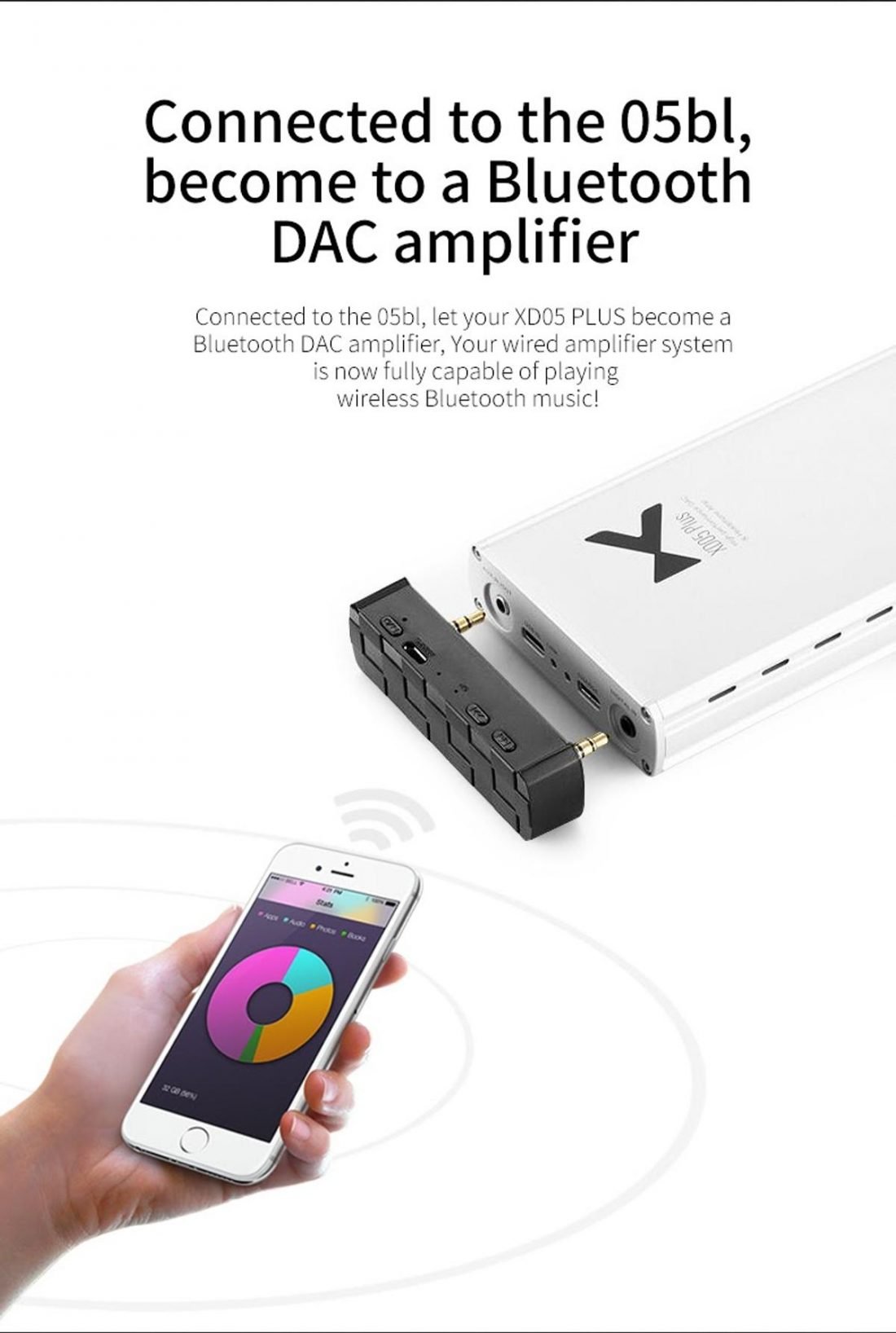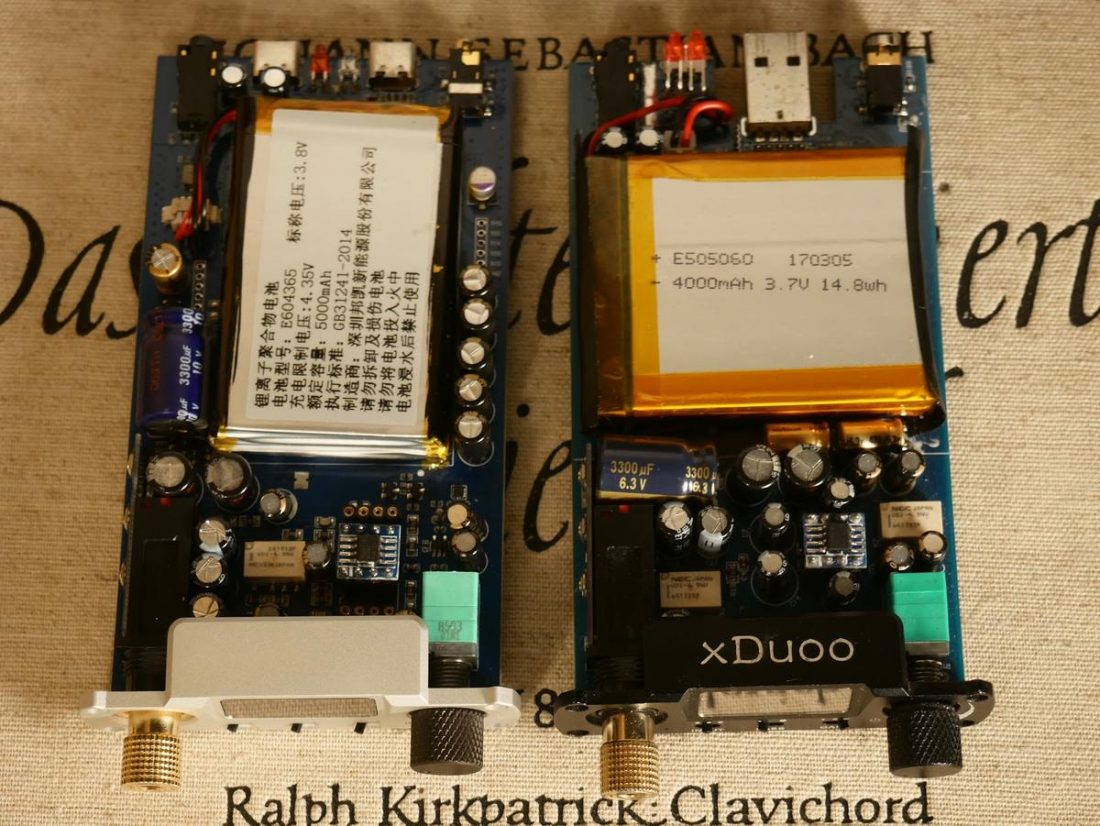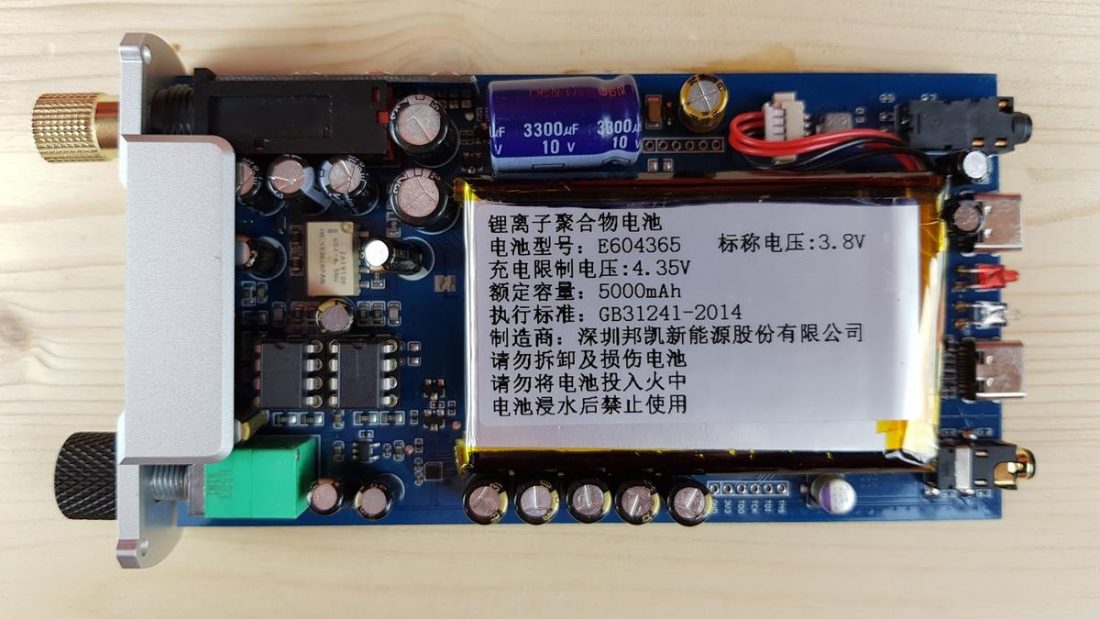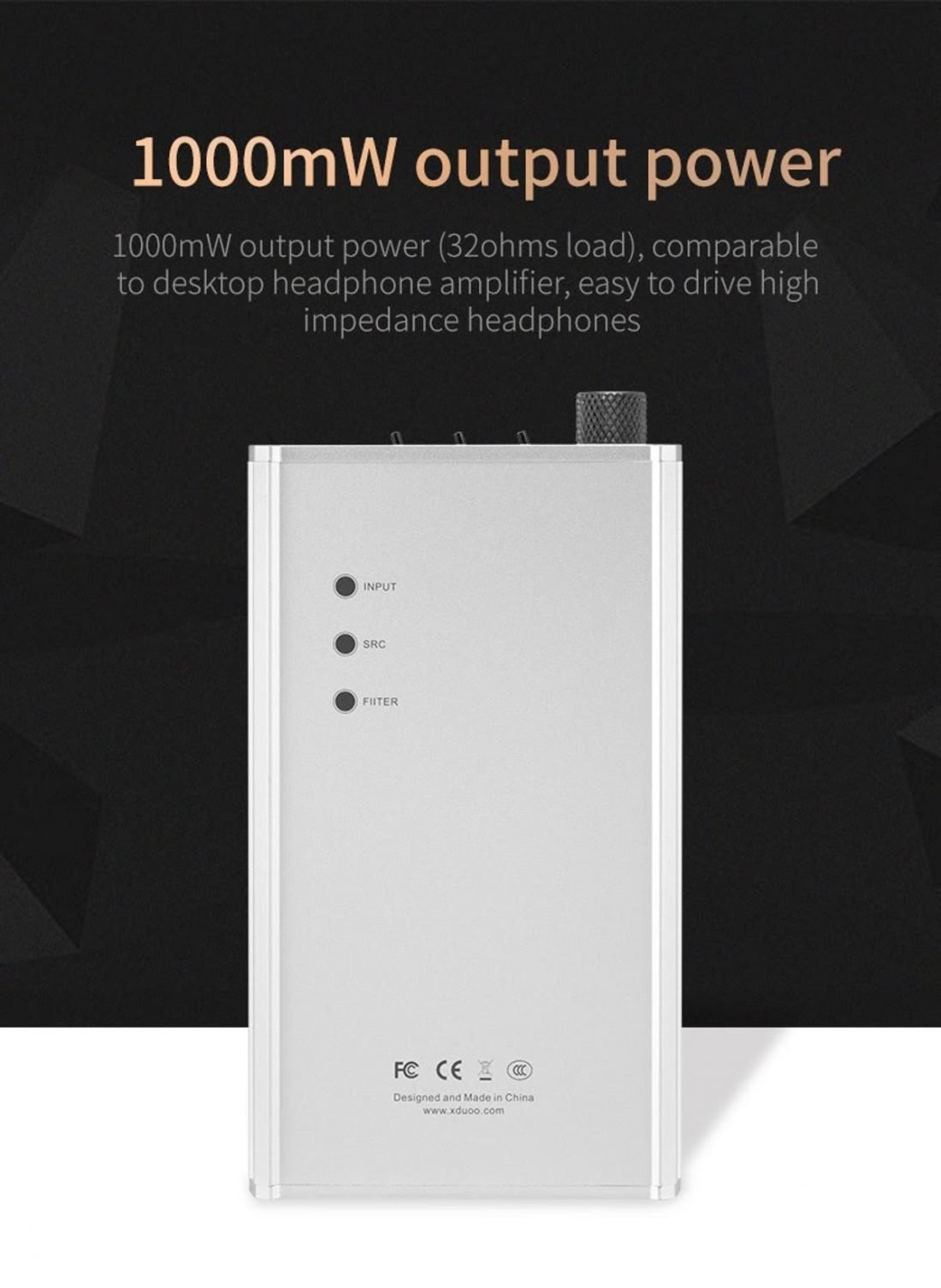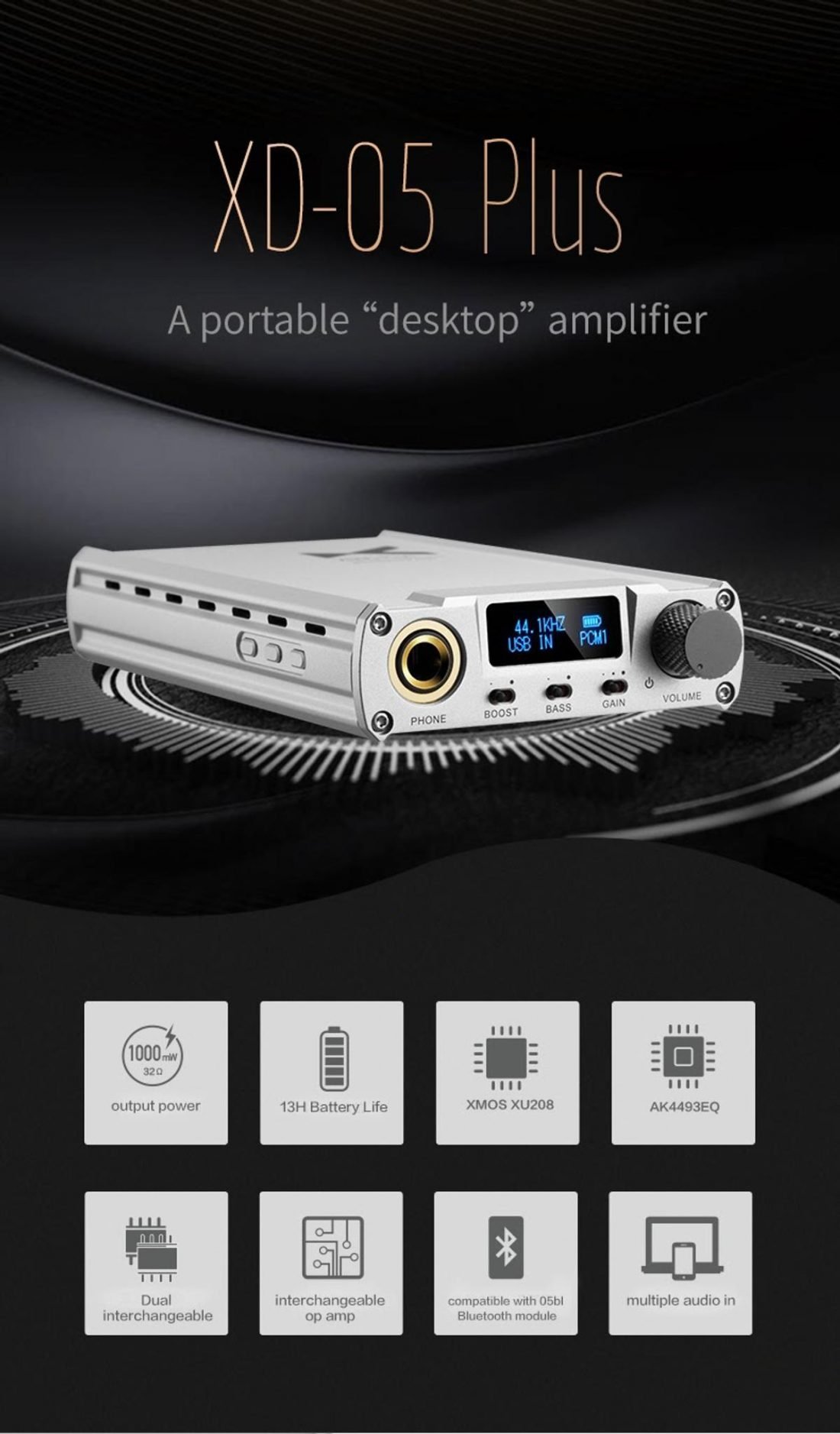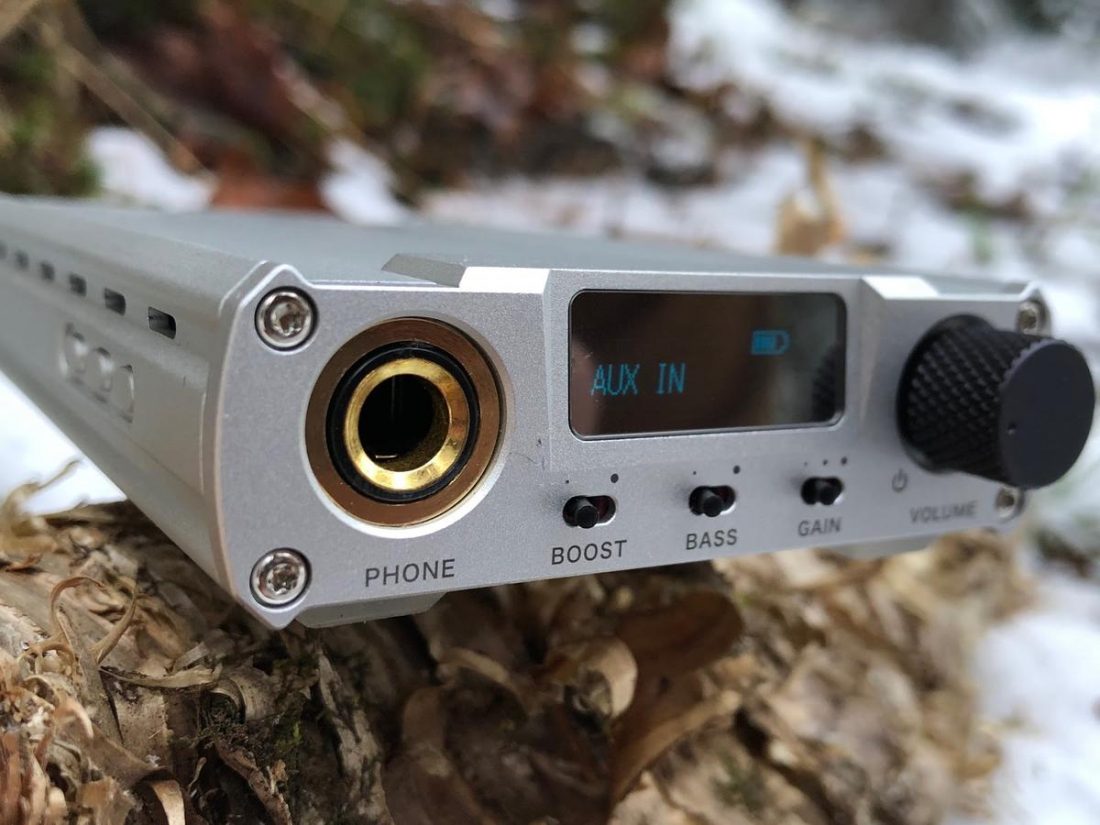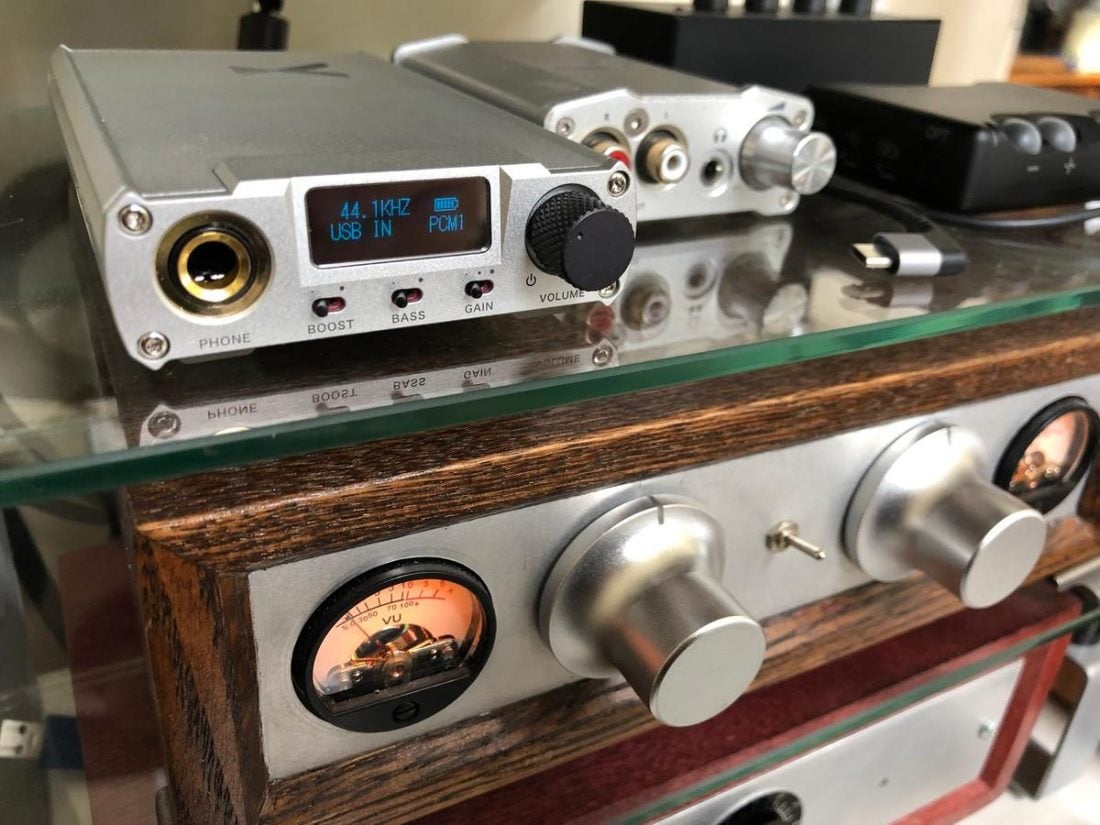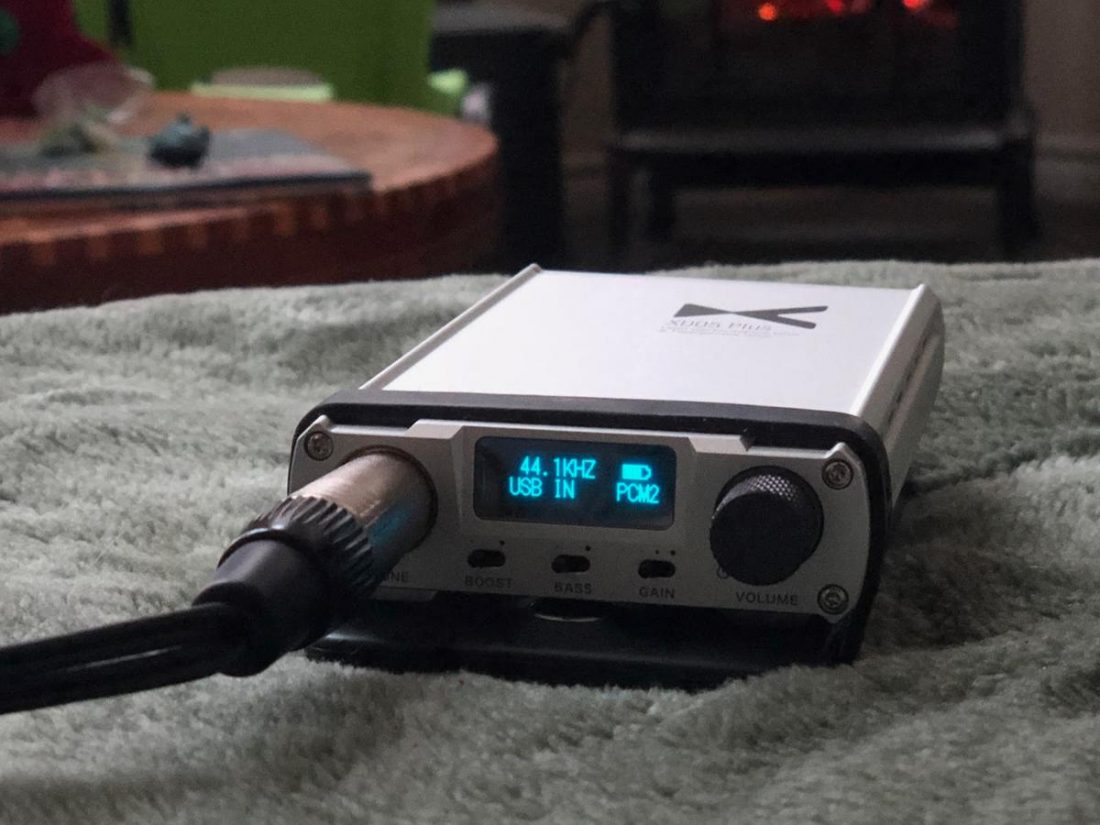In Romeo and Juliet, Shakespeare posed the immortal question that Chi-Fi manufacturers seem to be determined to ignore. These manufacturers appear to go out of their way to make it impossible to differentiate the really great products from the chaff. Almost all the products are named some impenetrable code of letters and numbers.
Consider a company like Chord Electronics that has a memorable and easy to understand product lineup. Mojo. Hugo. Poly. They clearly belong to the same family and yet each is unique and unforgettable. They are all unmistakably Chord.
Schiit Audio has also figured out how to be memorable with naming decisions, albeit made with their tongue firmly placed in cheek.
On the other hand, how many Chi-Fi products have a name consisting of two random letters, plus one or two numbers, and perhaps a hyphen thrown in for good measure? Rhetorical question. All of them? Or at least it seems that way.
Enter the xDuoo XD05 Plus, which may well be “sweet”, but appears hopelessly confused as to its own name. I’ve never seen a product or company name written in so many different ways. Shakespeare would be appalled.
Seems like we should start out by determining exactly what we’re discussing today.
Is it xDuoo, XDUOO, Xduoo, or XDuoo?
According to the packaging and emails I have received from the company store ([email protected]), the correct capitalization is xDuoo. Yet, the website displays both ‘Xduoo’ and ‘xDuoo’ on product descriptions and the sender name for [email protected] is written as ‘Xduoo Official’ on emails I have received from them.
Is it XD05 Plus or XD-05 Plus?
Now, this is equally murky. I’m inclined to believe the writing literally on the device: ‘XD05 Plus’. This is backed up by the user manual. However, the website lists it as: xDuoo XD-05 Plus Headphone Amplifier.
For consistency sake, I’m declaring that it is now officially the “xDuoo XD05 Plus”. Everybody else just needs to follow suit. Pronto!
XDuoo Company Overview
There is not a lot of information available on xDuoo. They are located in Shenzhen China and (according to their website) have served as an ODM for many well-known brands and companies for several years. XDuoo focuses on headphone audio products including portable and desktop DACs, amplifiers, Bluetooth modules, DAPs, and interconnection cables. The XD05 Plus is an upgraded model of the previous XD05 DAC/amp which is still available for $50 less (the Plus is priced at $259). At this point, I usually pose a question along the lines of “but is the Plus worth the upgrade?” and let the reader decide as they read the article. This time, let’s cut to the chase. In a nutshell, although very similar looking, the Plus improves almost everything over the previous model. The USB charge and input ports are now both USB C. Amplifier output power is doubled to 1 Watt at 32 Ohm, with lower distortion and higher signal-to-noise. Battery life is improved with faster charging supported. The USB and DAC chips are both updated. The Plus also supports single and dual OpAmp chip rolling. So, what’s important to you when choosing a portable DAC/amp?
Size and weight? Format support? Variety of digital and analog inputs? Ability to drive a wide range of headphones? Sound quality? Price and value? All of the above?
At first glance, the XD05 Plus appears to tick all the boxes. Is it truly the promised ‘sweet rose’ of portable audio devices, or are there hidden thorns that we will soon discover?
Specifications
Compliant operating systems: Windows XP/7/8/10, Mac OS X, IOS, Android DAC chip: AK4493EQ USB chipset: XMOS XU208 Output power: 1000mW at 32 ohms Frequency response (amp): 10~100kHz (±0.5 dB) Frequency response (USB/SPDIF): 20Hz~20kHz (±0.5 dB) THD + N (USB/SPDIF in): 0.0016% at 1kHz THD + N (aux in): 0.0009% at 1kHz S/N: 117dB Crosstalk: ≥75dB Battery: 3.8V / 5000mAh Battery life: ≥13 hours (USB in), ≥21 hours (SPDIF in), ≥40 hours (aux in) Sampling Rate Support USB (PCM): 16–32bit / 44.1–384kHz DSP: DOP / NATIVE mode, DSD64–256 (1bit / 2.8M–11.2M) DXD: 24–32bit / 352.8K–384kHz OPT/COA (PCM): 16–24bit / 44.1–192kHz DSD: 1bit / 2.82 Mhz (DOP)
XD05 Plus Packaging
The XD05 Plus comes very attractively double-boxed in a white outer cardboard case and an inner embossed black box. The unit itself is securely nestled in black velvet covered foam. When removed, it allows access to yet another white cardboard box holding all the accessories. The unboxing experience is excellent and really conveys the impression of a premium product.
In the Box
The XD05 Plus device. 80 mm USB C – USB C OTG cable. 80 mm USB C – USB Micro OTG cable. 105 cm USB C – USB B 2.0 cable. 1/4” to 1/8” (6.35 mm to 3.5 mm) headphone jack adapter. 10 clear rubber adhesive feet. 5 extra case screws – note the unusual star shaped head pattern. 2 small black-handled, silver metal pegs that appear to function as port covers for the Digital Input and Aux In/Out ports. 40 mm x 70 mm clear silicone (xDuoo branded) spacer pad for portable tethering. Quick Start Guide and warranty card. “Magic Stick – 1pc”? That’s what it says in the Quick Start Guide in the “Package List” section. Perhaps it’s an invisible magic stick?
This is an OUTSTANDING included accessory package. Ten grippy and attractive adhesive feet (when you only need 4)? Five extra screws for the case in case you lose one while doing OpAmp changes? Wowsa. Color me impressed. The only notable missing accessory for me was a USB C – Lightning cable (for iOS) which I ordered from the online store.
XD05 Plus Design
As mentioned, the Plus looks much like the former XD05 model. It’s a standard aluminum sleeve design with screw-on matching brushed silver aluminum face and back plates. Measuring approximately 14.5 cm long, 7.5 cm wide and 2.5 cm high, it pushes the size boundaries as a pocketable device, but is still compact enough for portable use. The front face plate has a small blue OLED screen (centered between the volume/power knob and a full size ¼” headphone jack) which displays sampling rate, input source, battery life and DAC filter. It’s tiny but bright and easy to read. Below the screen protrude three tiny black plastic switches. The ‘BOOST’ switch is described in the manual as “increased thrust” to adapt to different impedance headphones. Safe to say that this can be left off unless using headphones above 150 Ohms impedance. Centered is the ‘BASS’ boost switch that adds 6 dB to the low end. On the right is the 3-position ‘GAIN’ switch that (from the manual) “boost up +3 / +11 dB, for drives (sic) high impedance headphones”. Viewed from the front, there are 3 small silver recessed oval buttons on the left side, which appear unlabeled unless you pick up the device and turn it upside down. (Why the bottom!?! Please write the labels on the side or top where we can see them!).
The back plate has two 3.5 mm jacks on either side. One functions as both digital optical and coax SPDIF input and the other does double duty and an analog input and output. There are 2 USB C ports for charging and for data input. Between these ports are two small LEDs that indicate a digital USB link (solid blue) and charging status (red blinking while charging). The only obvious feature missing is integrated Bluetooth support. xDuoo does offer Bluetooth add-on modules that plug into the rear panel, the 05BL and the 05BL Pro. Both are a bit bulky and add length to the device while covering up the charge and analog output ports. They are definitely a compromise compared to an internal Bluetooth implementation.
XD05 Plus Internals
The internal layout and design of the Plus is quite changed from the original XD05. The Plus features an optimized ultra-low noise LDO voltage regulating circuit to power the decoder, amplifier, and digital receiver chips separately which reduces interference and increases battery life. The new Asahi Kasei AK4493EQ DAC chip supports native DSD, DXD and PCM audio file decoding (but no MQA support). The XMOS XU208 digital receiver chip supports sampling rates up to 32 bit/384 kHz and DSD64 (DOP – DSD over PCM) via the optical/coaxial input. The design also features a dual-chip low phase noise oscillator and CPLD chip to reduce jitter. Also new is the larger 5000mAH battery, which is capable of 13 hours of playback through USB, 21 hours through the coaxial or optical input, and an impressive 40 hours via the analog aux input.
OpAmp Rolling Support
The included stock OpAmp is a dual Texas Instruments OPA1612. The XD05 Plus can support smaller dual SOIC OpAmps via a socketed SOIC to DIP8 adapter or can be replaced with a pair of single OpAmps in the two DIP8 sockets.
XD05 Plus Sound
Ok, ok. We get it. It’s got A LOT of features, but as I’ve said before, the proof is in the pudding. How does all that tech sound? Good. Really bloody good. The xDuoo XD05 Plus blurs the line between a very good desktop amplifier and a portable device. Most obvious is the sheer brute power this little monster can provide. 1 full Watt at 32 Ohms is nothing to sneeze at. The inclusion of a full sized ¼” headphone jack, three gain positions, and impedance (BOOST) switch really signifies that this little amp is more at home with full-sized headphones than tiny ultra-sensitive IEMs. In fact, the BOOST switch and (especially the) GAIN switch are intimidating when using the XD05 Plus with sensitive IEMs. I can’t stress enough that damage will be done to both the headphones and your ears if you inadvertently increase the gain and volume. Other than temporarily playing around with the BASS switch, the vast majority of my listening was done with the bass boost disabled. It appears to boost primarily in the mid-bass range and it added unnecessary thickness to the sound for my tastes. That being said, there are undoubtedly music and headphone combinations that will benefit from this feature. The xDuoo XD05 Plus does what a good DAC/amp should do. That is, it offers clear and dynamic sound, without unwanted coloration or sonic weaknesses. The Plus is virtually indistinguishable from good desktop amplification. In a portable device that is high-praise indeed. For the truly golden-eared, there may be more technical devices capable of better micro-dynamics, but for us mere mortals, it’s the impact and clarity of the XD05 Plus that impresses. I detected no irregularities across the audio frequency spectrum and I feel confident that the Plus is delivering what it should. Unfortunately, using the very sensitive KZ ZSX IEMs with the xDuoo XD05 Plus is less than ideal. With this combo, there is almost no usable range on the volume control. The volume knob doubles as the power switch, so by turning it clockwise to power on, the lowest volume level is approximately at 8 o’clock on the dial. After a quiet relay click, the music can be heard very quietly playing in the background. Between 8:00 and 10:00 on the volume control, channel imbalance is very apparent and doesn’t disappear until the volume is at a relatively normal/loud listening level. 11:00 is LOUD and 12:00 is unlistenable (keep in mind the knob turns until 5:00). And this is all with the GAIN switch at its lowest level. With gain set on the highest level, anything above 10:00 on the volume control is dangerously loud with sensitive IEMs! On the positive side, there is little to no background hiss and the noise floor is not noticeable at reasonable listening levels. If you are one to like to listen to your IEMs loud, there is more than ample power on hand to bring out the best in them. Lizzo’s entertaining 2019 album ‘Cuz I Love You’ really grabs your attention and absolutely punches you with this combination.
XD05 Plus Comparisons
There are a number of excellent DAC/amp options currently out there and I’ll only touch on a few that I have experience with. The most obvious comparison is with the original (non-Plus) XD05.
xDuoo XD05 (non-Plus)
We already touched on the differences between the ($50) less expensive XD05 and the Plus version above. To specify these differences:
iFi xDSD
I reviewed the excellent jack-of-all-trades iFi xDSD device and was impressed, but in the end, I didn’t love it. It is physically about ⅓ smaller than the XD05 Plus, can play higher resolution files (768kHz PCM and DSD512), supports MQA playback, and includes Bluetooth out of the box. The Plus offers better battery life, more amplifier power and in my opinion, a superior interface. Both sound excellent, but the xDSD is about $140 more expensive.
Chord Electronics Mojo
I recently reviewed the Mojo and fell for this little device. To be clear, the Mojo is in a different price category at almost twice the cost of the XD05 Plus, although it is about 4 years older. The Mojo supports 32 bit / 768 kHz USB playback but only supports 24 bit / 96 kHz through the SPDIF optical/coaxial connection. The Mojo works better with sensitive IEMs, but has a bit less power for truly demanding full-sized headphones (not that I have found any that it won’t drive properly). Design-wise, they almost couldn’t be more different. The Mojo is iconic, esoteric and artistic with its multi-colored rolling ball controls. The Plus is much more straight-forward and utilitarian. To my ears, the Mojo has the edge in sound quality and general musicality out of the box, but the ability to roll OpAmps in the xDuoo XD05 Plus means that you may be able to tune the Plus more for your tastes.
Conclusion
Earlier I posed a theoretical checklist of important considerations when selecting a portable DAC/amp. The xDuoo XD05 Plus really checks all the boxes. It’s a well-implemented design with excellent format support, a plethora of connection options, outstanding power and very good sound quality. Not to mention that it is an amazing bang-for-the-buck value proposition, especially since the Plus can do double duty as a desktop DAC or amplifier. I would also be remiss not to mention the included accessory bundle again. I’ve never seen a more complete package. All manufacturers should take note. The xDuoo XD05 Plus is undoubtedly a great product, but it isn’t quite perfect. According to the Peter Parker principle, “with great power comes great responsibility.” The XD05 Plus delivers power in abundance but does not quite live up to the more subtle aspects of responsibility. A more delicate gain design is sorely lacking. Currently the ‘loud’, ‘somewhat louder’, and ‘VERY LOUD’ options are too much for sensitive IEMs. The imbalanced volume potentiometer at the lowest volume levels further exacerbates this issue. Since the Plus is a battery-powered device, in a portable size and shape, it really should deal with portable IEMs better. Too much power, not enough subtlety. However, paired with full-sized headphones, all that power delivers in spades. The Xduoo XD05 Plus is clear and dynamic and doesn’t overtly color or change the sound. Lots of digital filter options and the ability to swap OpAmps is further icing on the sonic cake. The xDuoo XD05 Plus can easily serve as a desktop device. It can function equally well as a standalone DAC, or as an amp, or as a combo unit. It offers a (perhaps unbeatable) all-in-one mid-range option for someone starting their personal audio journey. Rather than worrying about buying separate amplifiers, DACs, and a portable rig, most folks could be easily satisfied with just this little device. Truly impressive. Now let’s hope someone comes up with a better name for it.
